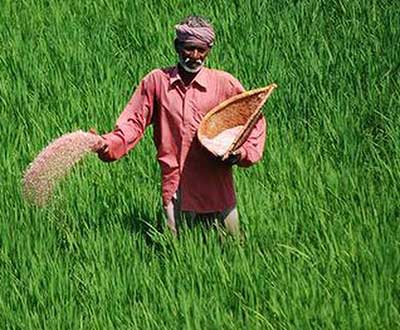Relevance: GS-2: Government policies and interventions for development in various sectors and issues arising out of their design and implementation
Key Phrases: Permit-licence Raj, Subsidy Raj, operational subsidies, Phenomenon of Brain Drain, Good Students, Bad Institutes syndrome
Context of today's editorial?
- Despite the Permit-licence Raj ended in 1991 and India’s
economy did better after. But the major issues are still hindering
the economic growth:
- Jobless Growth
- High Income inequality
- Declining GDP growth rates
- The prospects that, once Covid-19 eases, India’s economy will move up to “good enough” are now threatened by the emergence of Subsidy Raj, which appeals to both the Union and the State governments.
What do you mean by Subsidy Raj?
- Subsidy Raj is the growing political focus on operational subsidies, which do not promote higher growth, more jobs, or asset creation.
- The Raj is not a set of rules or policies, nor has there been a sudden increase in subsidies.
- Instead, Subsidy Raj is the increasing view of many Union- and
State-level politicians of various parties:
- A combination of a medium rate of growth, limited job creation, and expansive operational subsidies is enough to get them elected.
- This politico-economic combination is more attractive to politicians than focusing on high growth rates, more jobs, and limited subsidies, which is what India needs.
- The virtuous cycle of growth badly impacted:
- As economic growth generates additional tax revenues, governments use much of the additional revenues to fund additional operational subsidies.
- This squeezes out higher government investments necessary for higher long-term growth.
- In particular, Subsidy Raj holds back government investment in critical areas such as infrastructure, education and health facilities, and technology development.
- Finally, this shift in focus from government investments to operational subsidies threatens long-term growth.
What are the negative impacts of Subsidy Raj highlighted in the Editorial?
- Agriculture get trapped in vicious cycle– ' High Input, Low
Productivity' :
- Indian agriculture has progressed significantly over time but is a mess now because of long-standing operational subsidies.
- There are subsidies for fertilizer, electricity, and groundwater (no charge for what you pump out). And high support prices for key agricultural outputs, with no income tax.
- Agriculture remains a low-productivity activity, which forces many villagers to move to the urban informal sector.
- The high input dependence on chemicals and water means that in agriculture production use of physical resources is not sustainable.
- The reason is that much of government funds for agriculture are eaten up by subsidies.
- Now after the Centre was forced to withdraw the three 2020 farm laws, a few political leaders even can think about reducing subsidies.
- Health care sector becomes 'top-heavy' —"High dependence on Tertiary
facilities , Low regards for Primary Preventive facilities " :
- Covid-19 brought out the Indian healthcare system’s weaknesses, its increasing dependence on the private sector.
- The GDP fell, and many people lost their incomes. Yet, there is no significant new government investment in improving primary healthcare infrastructure.
- The Union government shrugs off the responsibility by saying the States are responsible for health. However, many State governments don’t care, leading to considerable inter-State differences in health outcomes.
- Huge inter-state variability:
- Kerala’s infant mortality rate is about 10 (US 6), and life expectancy is about 75 years (US 80). However, UP’s infant mortality rate is about 40 (Tanzania 39), and life expectancy is about 65 years (Afghanistan about 65).
- These differences are due to differences in healthcare investments by the States.
- Education severely impacted-"Phenomenon of Brain Drain“ and
"Good Students, Bad Institutes“ syndrome:
- Elite higher educational institutes have world-class students, but the institutes fail to be world-class. Unable to provide required skill for good jobs.
- Poor opportunities and High expectations lead to brain drain and predatory relationship with other nations—“Studied in India, Working in Foreign“
- Bad impact on Railways-'High operational-cost causing Low investment':
- The Railways, one of India’s largest employers, subsidises its employees with above-market wages. This is clear from the extraordinarily high number of people applying for each Railways job.
- Further, the Railways subsidises passenger traffic. These operational subsidies have increased the Railways’ operating ratio to 98.4 per cent (2019-20).
- The ratio reflects the prevailing railway disease— for each ₹100 of revenues, the Railways has, at the most, ₹1.60 for investment. Since this is not enough to finance the Railways’ investments, the railway modernisation suffered badly.
- The Railways doesn’t have enough money to upgrade its tracks for higher speeds. India now has train coaches that can run at 160 km/hour, but most of the track limits running speeds to 110 km/hour.
Conclusion:
- It is essential that people and politicians recognise that higher government investment is needed for higher growth and more jobs.
- The need is to reduce operational subsidies, though some targeted subsidies should be retained, particularly for poorer people.
- Much of India’s political leadership has now tilted the governments’ investment-subsidy balance in favour of subsidies. This tilt must go for India to have high long-term growth rates and create more jobs.
Source: The Hindu BL
Mains Question:
Q. Government Subsidies can be considered both, the culprit behind rising 'populism' as well as the victim of declining 'economic growth'. Analyze. Also discuss various ways to achieve the fine balance of ' Low operational subsidies and High economic growth'. (15 marks).









